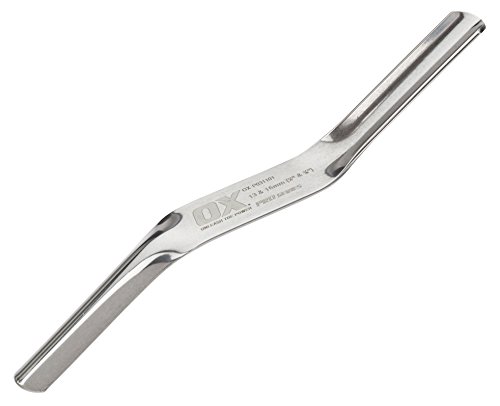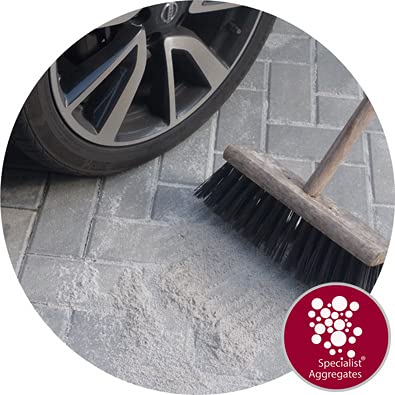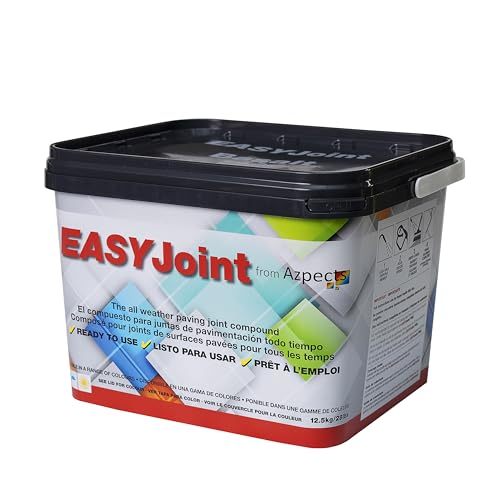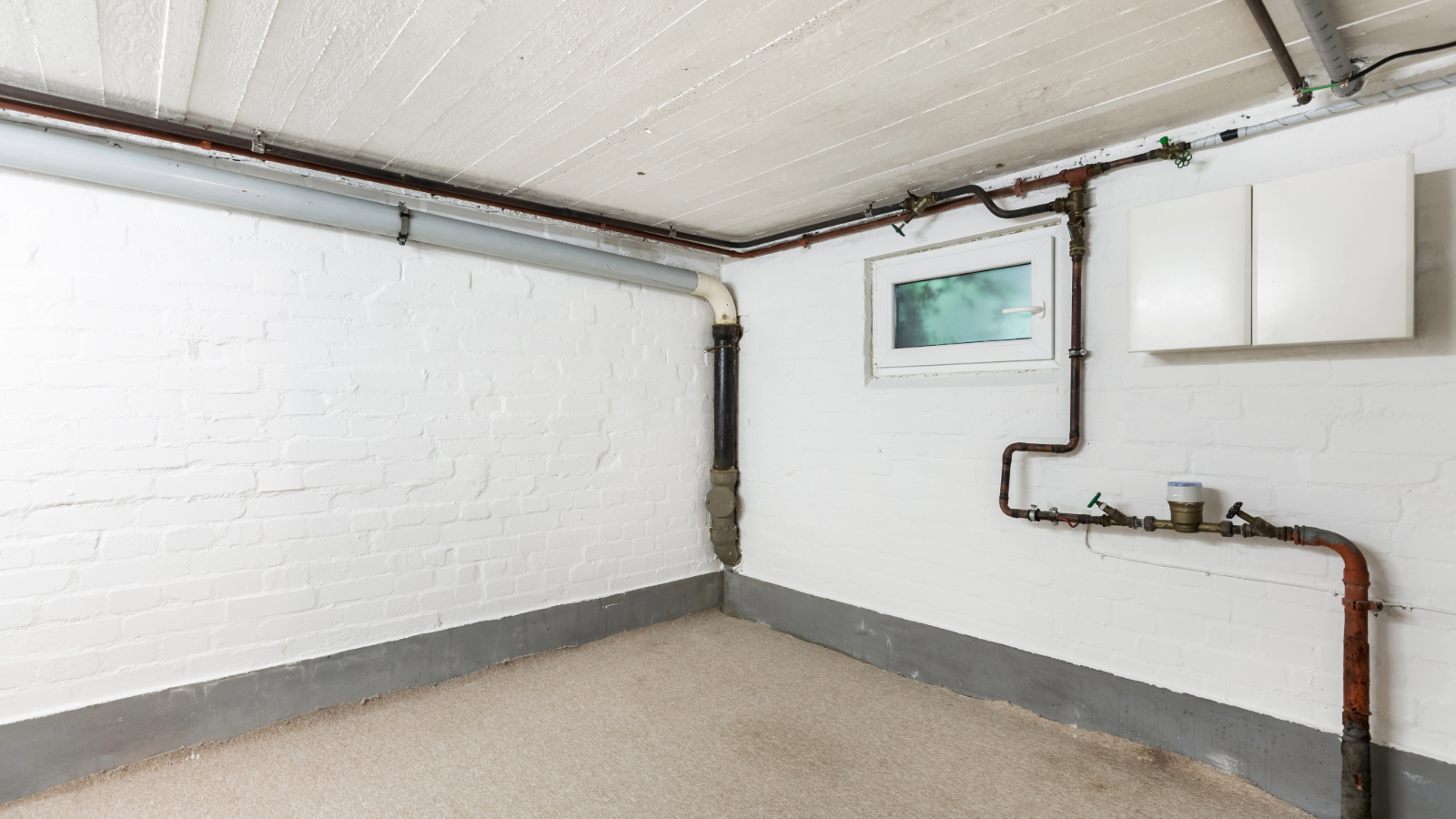Pointing patios is a quick and cost-effective way to get a great look. Here the pros tell you how
Pointing a patio will make it look good and add stability and longevity. Discover your DIY options
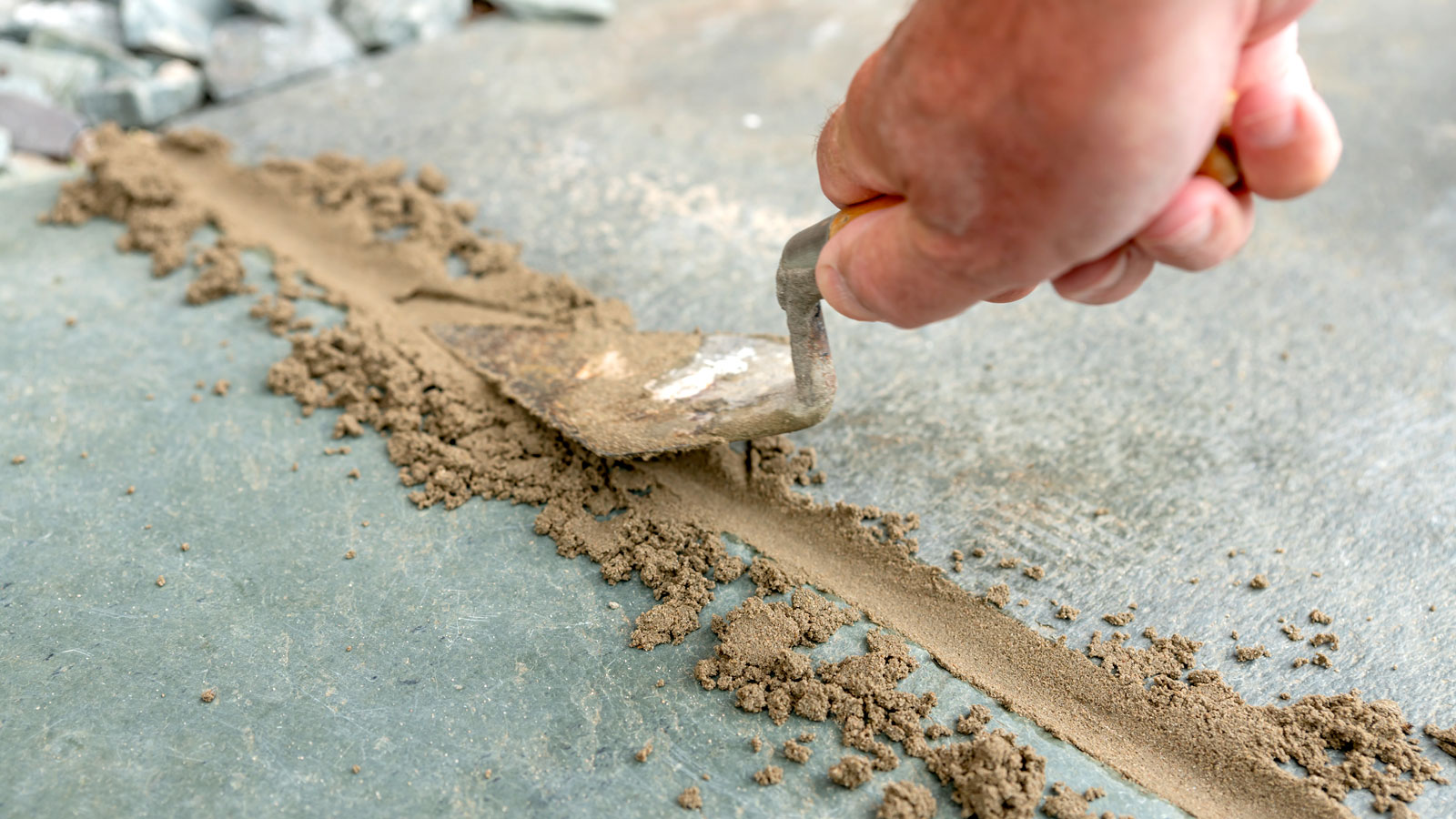
Pointing patios adds style and substance, bringing a neat finish and a stronger structure. It will complement your patio slabs, ensure that they stay in place, and help repress unwanted weeds.
You can try a traditional mix for a cost-effective finish that works well with concrete slabs. But if you want to elevate your patio ideas, contemporary jointing compound is the direction to take. It’s available in various colours and is easy to install. Whatever you choose, this guide will help you create pointing that looks great on your patio.
Pointing patios: What are the options?
There are typically two options for pointing a patio – traditional sand and cement or a jointing compound. Both do the same job, but in different ways, as Henry Barker, design lead at Sona explains. "The difference between jointing compound and sand and cement mainly lies in their composition and purpose."
He adds, "Sand and cement is a traditional mortar mix that offers strong, durable joints but can be harder to work with and less forgiving if not mixed or applied correctly."
The alternative is a jointing compound, which has a slightly different makeup as Barker shares, "Jointing compounds are pre-mixed products designed for ease of use and consistency." He adds, "They often contain additives that help with adhesion and flexibility and may come in powder or ready-mixed forms." They are also available in more colours than a traditional mix.

Henry Barker's years of experience in interior design and space planning equips him with a thorough understanding of design aesthetics, essential for guiding patio builders on achieving harmonious outdoor spaces.
Pointing patios with jointing compound
It's important that you get your pointing right, as it's not all about aesthetics as Loren Taylor, owner of Outdoor Fountain Pros points out, "Pointing keeps weeds out, stops water from creeping under the stones, and locks every piece in place so foot traffic and frost do not shift anything."
Pointing patios with a jointing cement is typically the preferred option today. Here's a step-by-step guide:
1. Clear and wet the patio
The first job is to remove any furniture, flowers and anything else – if applicable – residing on the patio and brush it clean. Now get a hosepipe and saturate the entire patio masking sure it is completely wet.
Bring your dream home to life with expert advice, how to guides and design inspiration. Sign up for our newsletter and get two free tickets to a Homebuilding & Renovating Show near you.
2. Spread the jointing compound
Get your jointing compound – such as Sika FastFix or Marshalls Weatherpoint – and spread across the patio as instructed. Brush the compound into the joints with a broom or hand brush. Use a brick jointer to press down the mix into the joint. Add more compound if needed and use the brick jointer to finish up.
3. Brush up and finish
Once all the gaps have been filled and the brick jointer finished, you will have leftover compound mix on the patio. Get a broom (like this Versatile Soft Bristle Broom from B&Q) and gently brush off the excess. Leave to dry out fully – this can take a couple of days to two weeks, depending on weather conditions.

Loren Taylor is a seasoned expert in landscaping and gardening, with a keen eye for exterior design. He has spent 17 years honing his craft, transforming outdoor spaces into serene, beautifully landscaped environments.
Try these for pointing patios
Point a patio with sand and cement
1. Pick a dry day
When using a dry mix you need to make sure that your patio slabs are completely dry and that there is no rain forecast. This will help make sure that dry mix doesn’t form into clumps and doesn’t stain your slabs, giving decent looking and effective pointing.
2. Create the dry mix
Get your sand – builders' sand or sharp sand – and general-purpose cement and mix in a ratio of one part cement and three parts sand. Mix in a wheelbarrow (like this 65L Heavy Duty Galvanised Wheelbarrow from B&Q), bucket, or on a board with a spade. Make sure that the sand and cement are mixed thoroughly to get an even and binding finish.
3. Sweep into gaps
Put enough dry mix onto one or two slabs and brush into the gaps with a hand brush. Use a trowel or brick jointer to push down the mix. Repeat the process on the same slabs and get a smooth even finish on the pointing. Repeat for the rest of the patio, working on one or two slabs at a time.
Cost to point a patio
This very much depends on what you use for pointing and whether you are doing it yourself or employing a pro.
If you do the job yourself, you will obviously save on labour costs, but you will need to buy the pointing materials and tools. There are two choices for materials: jointing compound or the old-school option sand and cement. Sand and cement costs around a third of the cost of jointing compound.
If you hire a pro to do the job, expect to pay around £10-20/m2. So, a small 3m x 3m patio will cost from £100-£200.
If you decide that you want a brand-new patio with smart new porcelain or natural stone, the patio costs can rise dramatically. So repointing makes a great stopgap until you have enough funds to go all out for a new patio.
On the other hand, if you need to budget for larger scopes of external work, read our guide to repointing costs.
FAQs
How do I repoint a patio?
This is very much the same process as pointing a patio, but you will need to do a little prep beforehand. First, you will need to remove the old pointing with a hammer and a bolster or plugging chisel (like this Footprint Plugging Chisel from Amazon)
Once you have removed the old pointing, you need to clean the joints with a stiff brush – a narrow wire brush (like this ProDec 10-inch Soft Grip Wire Brush from Amazon) is good for stubborn pointing. To finish, rinse the patio with a hose and leave it too dry. Finally, follow the step-by-step instructions above to repoint the patio.
What is the best sand for pointing patio slabs?
If you are using a traditional dry mix, you will get a smoother finish if you use dry building sand or kiln-dried jointing sand (which is a fine dry sand). Sharp sand is coarser and won’t give such a smooth finish. But Taylor points out, "I use a sharp, washed sand because the gritty texture helps the mix bite into the edges of the slabs and set firm."
You can use a brick jointer to press down the dry mix and smooth it out. You may need to add more loose dry mix to fill the gap. If you do, use the brick jointer to press down again. Repeat until the gap is filled. There isn’t a great deal of difference in the look of the finish if you use a brick jointer.
Taylor adds, "If I go with a resin or polymer jointing product, I use kiln-dried fine sand, which the compound can pull deep into the joint for a tight seal."
Try out some smart and subtle patio lighting ideas, and your pointing will look good whatever sand you have used.
What is the best mix for pointing a patio?
This applies to the more traditional dry mix of sand and cement, with the popular choice being one part cement and four parts sand. This is for more general building use, but it does work on patios.
Alternatively, you can use a ratio of one part cement and three parts sand for patios. Do not use any other ratio, as it won't set properly, and you will need to do it again.
Make sure you mix the sand and cement thoroughly and evenly. Otherwise you will have problems with parts of the pointing not setting properly and breaking up.
Once you have finished your patio, consider looking at patio edging ideas, such as walls and borders, to give it a cool, contemporary look.
If you’re thinking of adding or replacing a patio, check out our guide on how to design a patio to get the patio you want. With a patio in place, you’ll need to know how to clean patio slabs and how to remove algae from patio slabs to keep them looking good.
Steve Jenkins is a freelance content creator with over two decades of experience working in digital and print and was previously the DIY content editor for Homebuilding & Renovating.
He is a keen DIYer with over 20 years of experience in transforming and renovating the many homes he has lived in. He specialises in painting and decorating, but has a wide range of skills gleaned from working in the building trade for around 10 years and spending time at night school learning how to plaster and plumb.
He has fitted kitchens, tiled bathrooms and kitchens, laid many floors, built partition walls, plastered walls, plumbed in bathrooms, worked on loft conversions and much more. And when he's not sure how to tackle a DIY project he has a wide network of friends – including plumbers, gas engineers, tilers, carpenters, painters and decorators, electricians and builders – in the trade to call upon.
